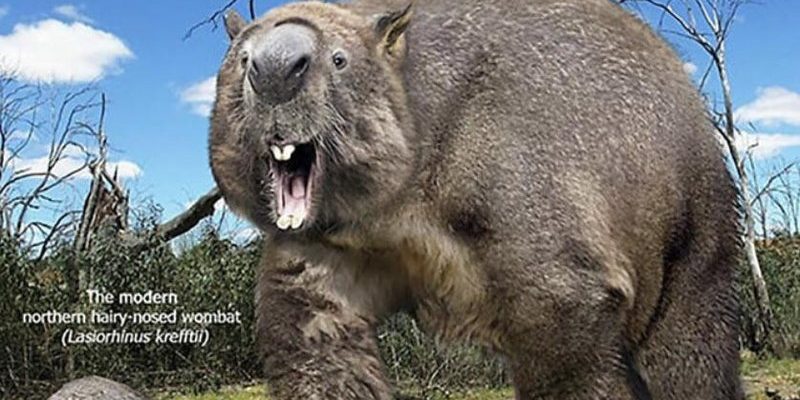![Comparing The Wombat Vs. [Similar Species]](https://gudri.com/wp-content/uploads/2025/06/Comparing_The_Wombat_Vs___Similar_Species__image_0.jpg)
In this article, I’ll walk you through the fascinating characteristics of both the wombat and the koala, comparing their habitats, diets, behaviors, and even how they interact with their environment. So, grab a cup of coffee, and let’s explore these iconic Aussie creatures together!
Understanding Their Habitats
Wombats thrive in a range of habitats, from woodlands to grasslands, but they have a penchant for burrowing into the earth. These adorable beasts create extensive tunnel systems, which they use for shelter and to escape the hot Australian sun. You might picture them as master builders of the animal kingdom, meticulously digging out spacious burrows that can stretch up to 100 feet long. Just imagine a cozy underground home filled with soft grass and leaves!
On the other hand, koalas are the ultimate tree dwellers. They prefer eucalyptus forests because they munch mainly on eucalyptus leaves. These trees not only provide their primary food source but also serve as their home. Picture the koala snoozing atop a branch, blending into the leaves like a pro. Their habitat choice reflects their unique diet, as not all plants are suitable for their picky palates.
In summary:
- Wombats: Burrowers, living in various landscapes.
- Koalas: Tree-dwellers, mainly found in eucalyptus forests.
Diet: What Do They Eat?
When it comes to food choices, wombats have a more varied diet. They are herbivores and primarily munch on grasses, roots, and bark. Imagine them grazing on the ground like tiny tanks, their sturdy bodies built for gnawing through tough vegetation. Their digestive systems are slow, taking up to 14 days to process food, which helps extract maximum nutrients from their fibrous meals.
Koalas, however, are much pickier eaters. They feast mainly on eucalyptus leaves, which are toxic to most animals. They have a specialized digestive system that allows them to break down those toxins. So while they might seem lazy lounging in the treetops, their choice of food is a clever adaptation. They can afford to nap for up to 20 hours a day because their diet gives them very little energy!
Here’s a quick comparison:
- Wombats: Eat grasses and roots; slow digestion.
- Koalas: Prefer eucalyptus leaves; specialized digestion.
Behavior and Lifestyle
Wombats are known for their solitary nature. They’re nocturnal, spending the night foraging for food and the day resting in their burrows. It’s kind of like having a secret life underground! They are quite territorial and use scent-marking to communicate with others. If you ever spot one outside its burrow, consider yourself lucky; they’re shy creatures.
Koalas, on the other hand, are social animals—though not in the way many species are. They often hang out in groups called “clumps,” lounging on eucalyptus trees to conserve energy. You might find them sharing trees but not getting too close. While they’re not the most active animals, they will occasionally engage in playful behavior, especially the younger ones. Honestly, watching a baby koala play is like watching a cute teddy bear come to life!
To sum it up:
- Wombats: Solitary, nocturnal, and territorial.
- Koalas: Social in groups, tree-dwelling, and mostly inactive.
Reproduction and Lifespan
When it comes to reproduction, wombats have a gestation period of about 20 to 30 days, after which they give birth to a single joey. This joey spends several months in its mother’s pouch, growing and developing before venturing out. Wombats can live up to 15 years in the wild and even longer in captivity. Their intimate relationship with their offspring is an endearing aspect of their nature.
Koalas also have a gestation period of about 35 days. Typically, a female koala will have one joey at a time, and this little one will stay in her pouch for about six months. Once it’s out, the joey will continue to nurse and stay close to its mother for up to a year. In the wild, koalas can live around 10 to 12 years. Despite their cuteness, they face threats from habitat loss and disease, making conservation efforts crucial.
In comparison:
- Wombats: Short gestation, single joey, 15+ year lifespan.
- Koalas: Longer gestation, single joey, 10-12 year lifespan.
Conservation Status and Threats
Both wombats and koalas face significant threats from habitat destruction, climate change, and disease. Wombats, particularly the northern hairy-nosed wombat, are critically endangered, with efforts underway to protect their habitats and increase their populations. These little creatures need our help to ensure they can continue to thrive in their native environments.
Koalas are also experiencing population declines due to habitat loss and a disease known as chlamydia, which severely impacts their health and reproduction. Conservation programs focus on preserving their habitats, promoting public awareness, and making sure these cuddly marsupials have a future.
To highlight the threats faced:
- Wombats: Endangered status, habitat loss, climate change.
- Koalas: Population decline, disease, habitat loss.
Final Thoughts
So, there you have it! Wombats and koalas are two incredible marsupials that represent the unique wildlife of Australia. While wombats are sturdy, burrowing creatures with a varied diet and solitary habits, koalas are social, tree-dwelling munchers with a strict eucalyptus diet. Both face significant challenges in the modern world, but with conservation efforts, we can help ensure they remain a part of Australia’s rich ecosystem.
Next time you think of these two furry friends, remember their remarkable differences and the roles they play in their environments. Whether you’re an animal enthusiast or just curious about wildlife, the more we learn, the better we can protect these unique species for future generations.

